Key takeaways:
- Understanding editing software basics, such as exposure adjustments and file formats, is crucial for enhancing image quality.
- Choosing the right editing software depends on individual needs, balancing user-friendliness with advanced features.
- Essential features to look for include non-destructive editing, presets for batch processing, and community support for improved workflow.
- Engaging with online forums for feedback can foster growth, collaboration, and new perspectives in your photography journey.
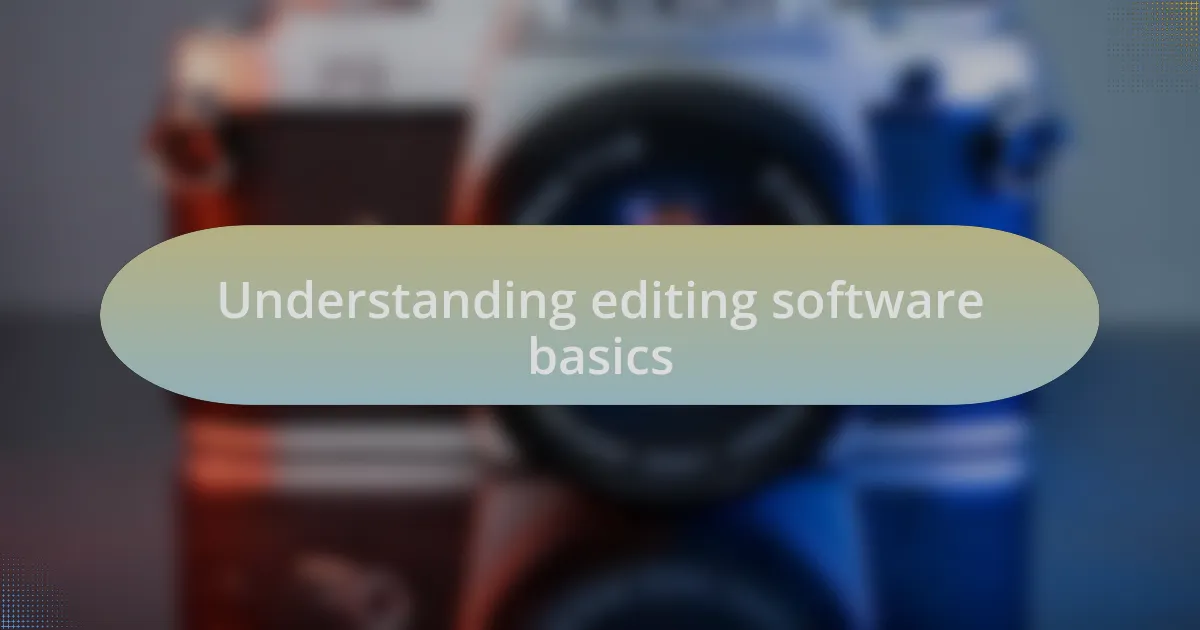
Understanding editing software basics
When I first delved into editing software, it felt overwhelming. The array of tools and functions can be daunting, but understanding the basics truly transforms your approach to photography. Did you know that even simple adjustments like exposure and color balance can radically enhance an image?
One essential aspect I’ve learned is that every editing program has its unique workflow. For example, I remember my initial struggles with layers in Photoshop. At first, they confused me, but once I grasped how layers allow you to edit specific parts of an image without affecting the whole, it opened up a new world of possibilities. It’s like having a safety net—giving you the freedom to experiment without fear.
Additionally, understanding the significance of file formats is crucial. When I accidentally saved a vibrant photo as a JPEG instead of a TIFF, the quality loss was heartbreaking. That experience taught me to always consider how I intend to use my images. Are you aware of how the right format can impact your work? It’s more than just technical knowledge; it’s about preserving the artistry you’ve created.
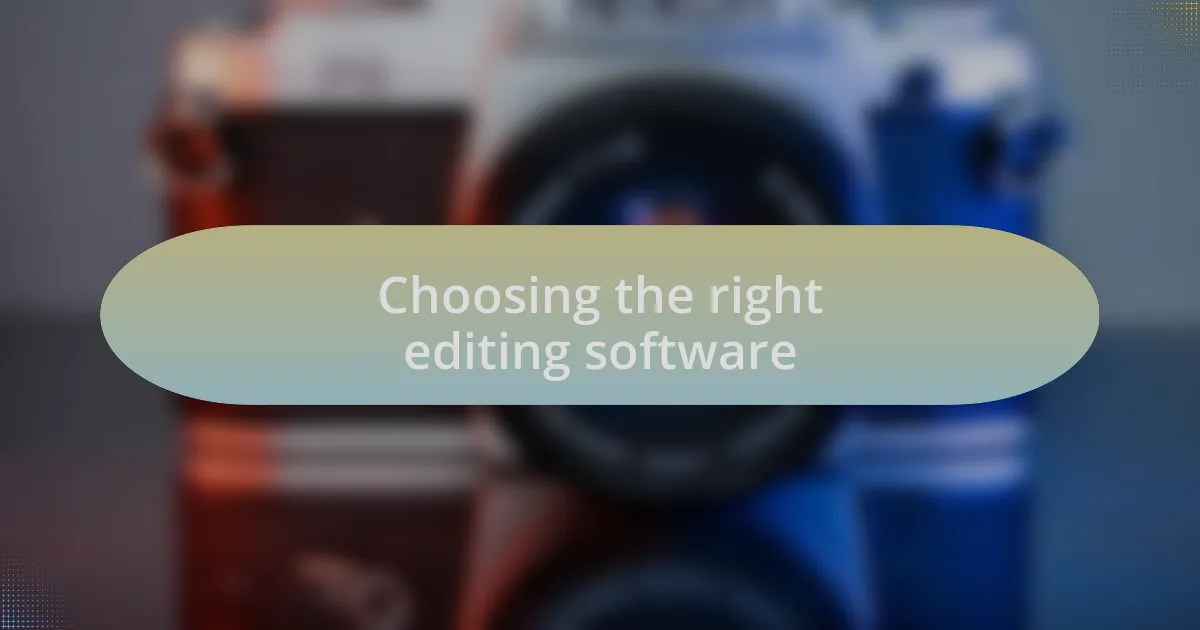
Choosing the right editing software
Choosing the right editing software can feel like finding a needle in a haystack, especially with so many options available. Early on, I experimented with several programs, but I quickly learned that the right fit really depends on your specific needs as a photographer. Ask yourself, do you prioritize user-friendliness or advanced features? Your answer might steer you toward simpler options like Lightroom or more complex ones like Capture One.
One pivotal moment for me was trying out a free trial of a professional editing software. I remember being captivated by the robust features but also feeling overwhelmed by the complexity. It made me realize that while powerful tools are tempting, what truly matters is how intuitively you can navigate them to enhance your creative vision. Have you ever felt torn between wanting high-end software and the ease of use? Finding that balance can significantly impact your editing experience.
In my journey, I also discovered the value of community recommendations and online reviews. Testimonies from fellow photographers pointed me toward software I might never have considered. It’s inspired me to reach out and share my experiences too. What about you—have you sought advice from others before making a decision? Engaging with the community can often reveal hidden gems that align perfectly with your style and workflow.
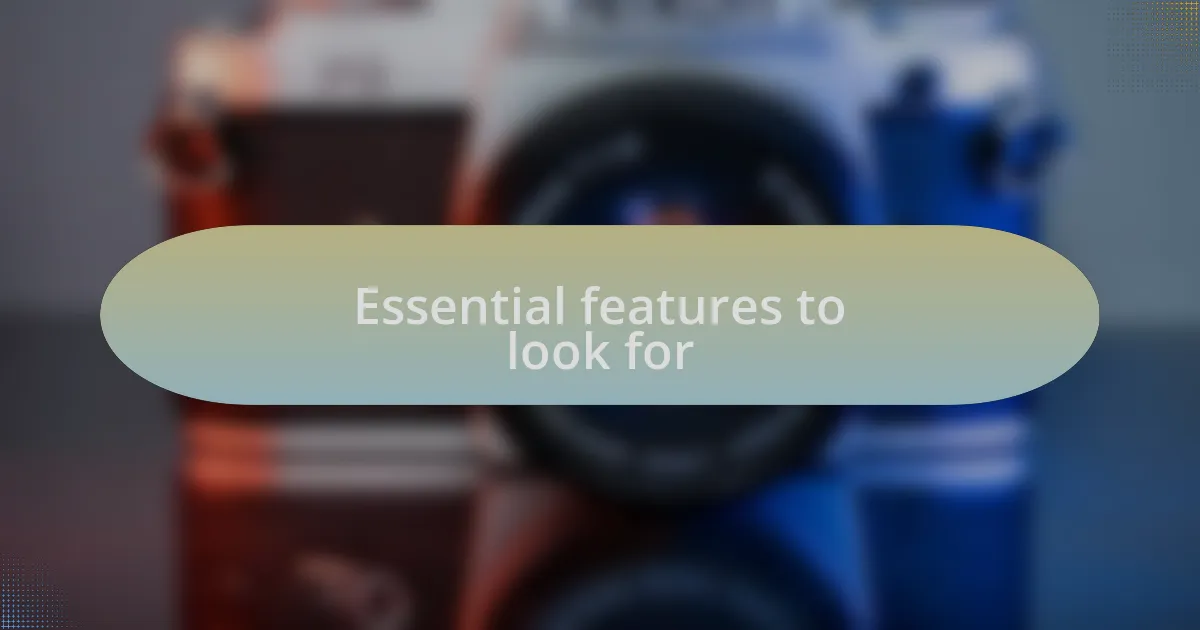
Essential features to look for
When searching for editing software, one essential feature to look for is non-destructive editing. This means you can make adjustments without permanently altering your original image. I can’t tell you how liberating it felt to know I could experiment freely, tweaking colors or cropping without fear losing the original shot. Have you ever hesitated to make bold edits because you were worried about ruining a great photo? I know I have, and that’s why non-destructive features are a must for me.
Another crucial aspect is presets and batch processing capabilities. In my experience, these features can save a massive amount of time, especially when you have numerous images from a single shoot. I remember one particular project where applying a custom preset allowed me to achieve a consistent aesthetic across 300 photos in just a few clicks. It felt like I was working smarter, not harder! Have you ever found yourself wishing you could speed up your workflow? Presets might just be the solution you need to elevate your editing efficiency.
Lastly, keep an eye out for user support and community engagement around the software. I once stumbled upon an online forum filled with users sharing tips and tricks for an editing program I was using, and it transformed how I approached my editing process. It’s these connections that not only enhance my skills but also make me feel part of a larger creative community. Have you found valuable resources or support networks that have helped you become a better photographer? This kind of engagement can truly make a difference in your editing journey.

My editing workflow steps
When I dive into my editing workflow, the first step is always importing and organizing my images. I create folders that categorize my shoots, and this simple act saves me countless hours later. Have you ever spent too much time searching for a photo? I remember feeling overwhelmed by a backlog of photos before I streamlined my process; now, finding what I need is a breeze.
Next, I make a preliminary pass through my images, selecting the ones that truly stand out. It’s fascinating how, with just a glance, I can often spot the potential in a photo that might seem ordinary at first. I recall a moment when I chose a shot with an imperfect composition, yet it revealed an incredible story once edited. Do you trust your instinct when selecting images, or do you find it challenging to let go of some?
Once I’ve narrowed down my favorites, I jump into the editing phase, focusing first on adjustments like exposure, contrast, and color balance. I often use a reference photo to guide my adjustments and ensure my images maintain a consistent look. There’s something rewarding about seeing a dull image transform into a vibrant visual through careful editing. Have you ever had that moment when everything clicks into place during the editing process? It’s a feeling I chase each time I work on a new batch of photos.
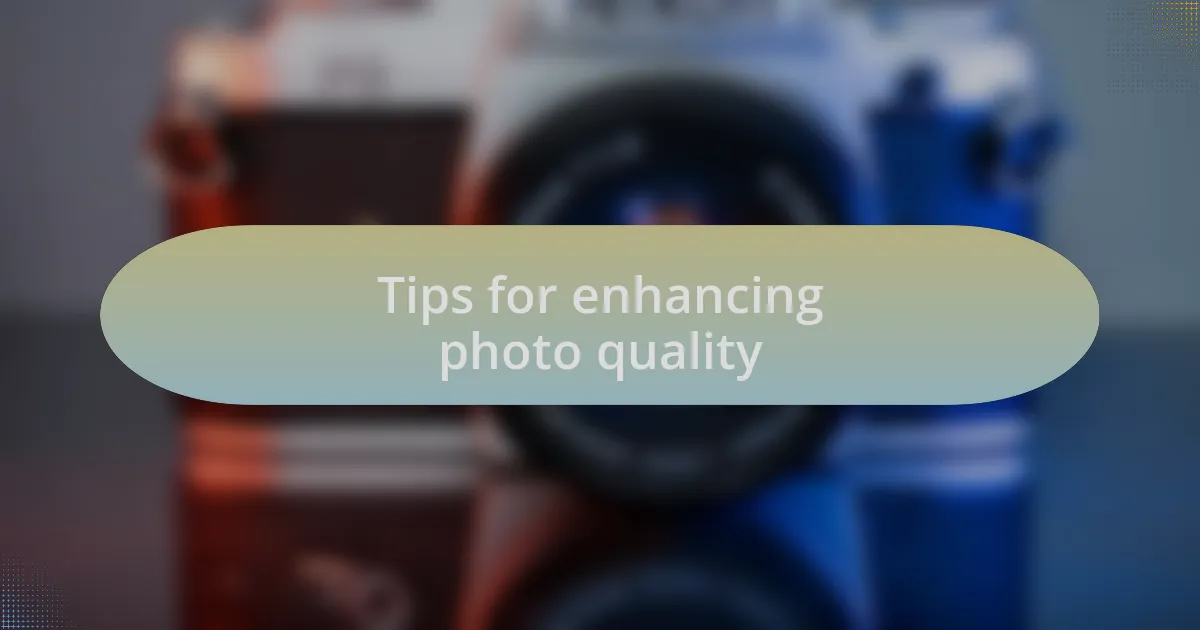
Tips for enhancing photo quality
One effective tip for enhancing photo quality is to pay close attention to the sharpening process. I remember the first time I applied sharpening selectively—it was like the image came to life. Instead of global sharpening that could lead to noise, I now focus on specific areas of interest. Have you ever noticed how a little extra sharpness around the subject can draw the viewer’s eye?
Another aspect I find crucial is adjusting the lighting effectively. I often use curves to bring out the depth in my images. It’s incredible how manipulating shadows and highlights can add dimension and drama. There was a time I struggled with flat images until I learned to embrace this tool. Have you explored the curves feature, or do you find it intimidating?
Lastly, I advocate for the importance of color grading within your editing software. Adding a certain color cast or mood can dramatically change the narrative of a photo. I once edited a landscape shot by shifting the colors towards cooler tones, resulting in a serene, almost dream-like quality. Have you considered how color can influence the emotion conveyed in your photos? Letting my intuition guide me in this area has transformed my work, and I encourage you to experiment—each image has its own story to tell.
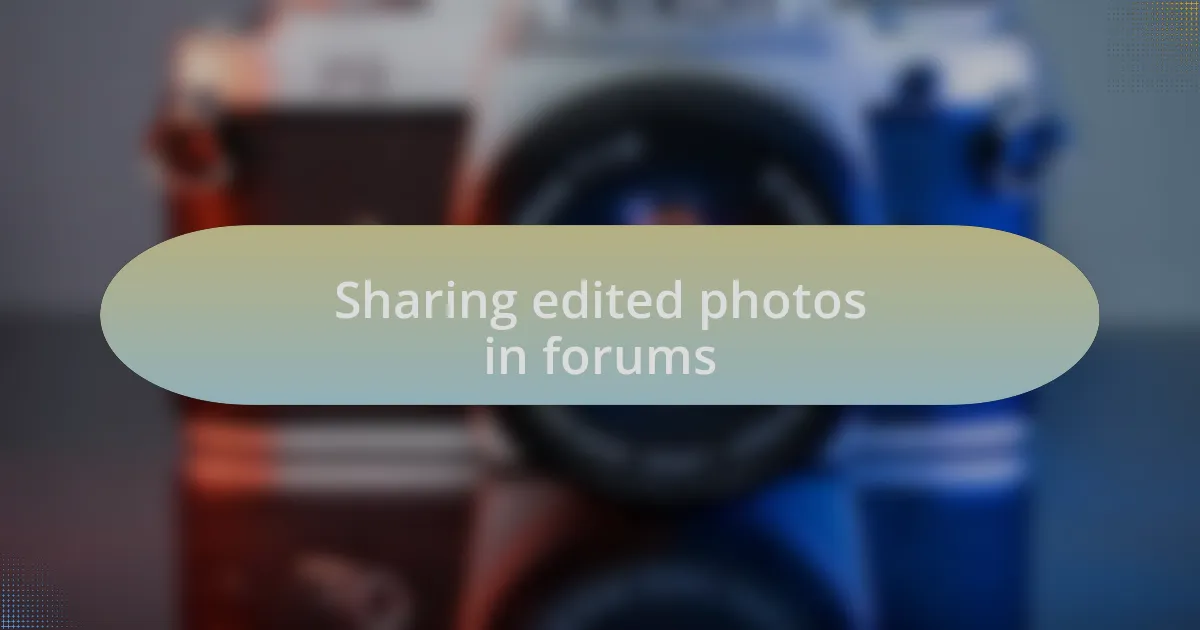
Sharing edited photos in forums
When I share my edited photos in forums, I often feel a mix of excitement and nervousness. The feedback can be incredibly rewarding or, at times, a little harsh. I remember posting a before-and-after edit of a portrait I worked on for hours; the compliments were overwhelming, but the few constructive critiques helped me grow. Have you ever felt torn between sharing your art and fearing the judgment it might invite?
Engaging with fellow photographers in forums can truly elevate your skills. After posting my latest landscape edit, I was struck by the thoughtful discussions it sparked. Someone pointed out an interesting compositional change that I hadn’t considered, which led me to re-edit the photo and push my creative boundaries. Isn’t it fascinating how community feedback can illuminate new perspectives on our work?
Additionally, sharing edited photos often leads to collaborations and friendships within the community. I recall connecting with a fellow photographer after sharing a striking macro shot—I had edited to highlight intricate details. Our private exchanges turned into a collaborative project that enhanced both of our portfolios. Have you explored the potential for collaboration within your photography network? Sharing can truly open doors you never knew existed.